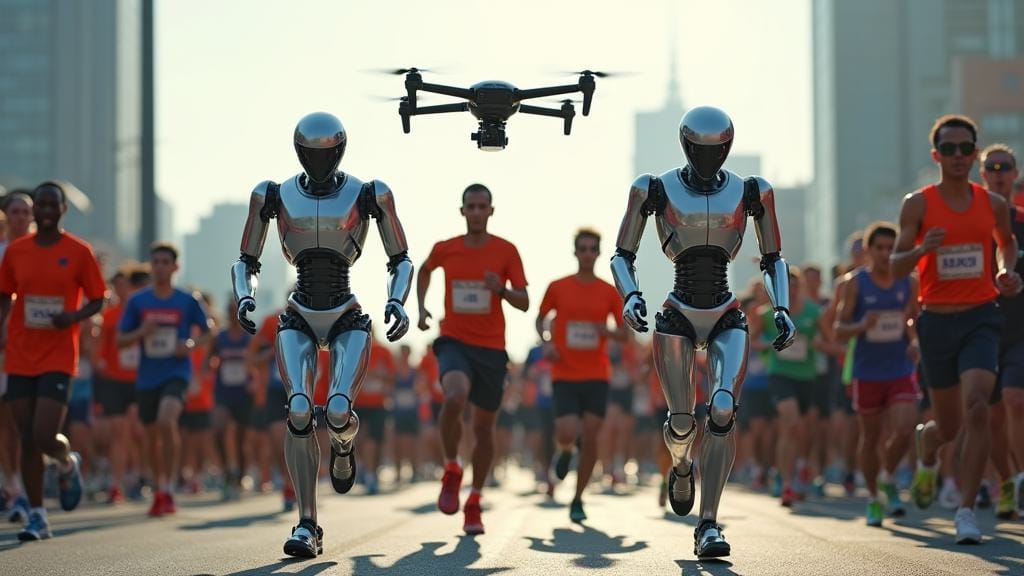You could soon see robots outrunning humans in the first-ever human-robot half-marathon in Beijing on April 13, 2025. With 12,000 humans and advanced robots, like Tiangong reaching speeds of 10 km/h, this 21-kilometer challenge tests human-robot endurance and adaptive AI algorithms. Despite a time limit of three and a half hours, strategic battery swaps pose a 10-minute penalty, bringing an exciting edge. Discover the fusion of technology and athleticism as humans and robots race side by side.

As the worlds of human athleticism and robotic innovation merge, all eyes are on Beijing, where the first human-robot half-marathon is set to take place on April 13, 2025. This groundbreaking event will see 12,000 human runners competing alongside humanoid robots from 20 tech companies, covering a challenging 21-kilometer route.
It’s a thrilling prospect, as both remote-controlled and fully autonomous robots will test their mettle against human endurance, showcasing the strides made in AI and robotics. The event, hosted by the Beijing Economic-Technological Development Area, aims to spark discussions on humanoid robotics and highlights the rapid evolution of humanoid robots in the tech industry.
You might wonder what makes these robots capable of such a feat. Many, like the robot Tiangong, can run at speeds up to 10 km/h, thanks to sophisticated AI algorithms that allow real-time decision-making. With AI-powered cybersecurity protecting these advanced machines from potential interference, the race promises unprecedented safety measures.
The robots, ranging in height from 0.5 to 2 meters, are designed to mimic human bipedal movement without the aid of wheels, staying true to the event’s strict design requirements. Advanced sensors and motors are standard, ensuring these mechanical participants aren’t only fast but also agile and responsive to the dynamic race environment.
Engineered to emulate human strides, these agile robots navigate the race without wheels, demonstrating advanced sensor-driven agility.
The competition is structured with a time limit of three and a half hours for all participants. This timeframe challenges both human and robotic competitors to push the limits of their endurance.
Prizes await the top three finishers, blurring the line between man and machine as they compete on equal footing. In a twist, robot teams can swap out machines or batteries during the race, though each switch incurs a ten-minute penalty, adding a layer of strategy to the event.
Beyond the race itself, this event aims to elevate public awareness of robotic capabilities and catalyze growth within the industry. It highlights technological advancements in AI, offering a glimpse into potential future applications in sports and everyday life.
The marathon serves as a demonstration of China’s commitment to innovation in robotics, while also prompting important ethical discussions about AI’s role in society.
Ultimately, this event is more than just a race; it’s a global stage that draws attention to the evolving relationship between humans and machines, promising to inspire future developments and collaborations.

